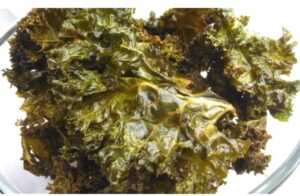 Enjoy the health benefits of eating more greens, while supporting the Colorado farm economy. Purchase fresh in-season Colorado greens at a local farmers market or grocery store near you. The Colorado crops that will be available at Farmers Markets and stores in May and June include a large variety of leafy greens such as collard, mustard, turnip, and beet greens, arugula, spinach, kale, lettuce, chard, and Napa cabbage. Additional Colorado grown vegetables available in spring and early summer include asparagus, radishes, herbs, and mushrooms.
Enjoy the health benefits of eating more greens, while supporting the Colorado farm economy. Purchase fresh in-season Colorado greens at a local farmers market or grocery store near you. The Colorado crops that will be available at Farmers Markets and stores in May and June include a large variety of leafy greens such as collard, mustard, turnip, and beet greens, arugula, spinach, kale, lettuce, chard, and Napa cabbage. Additional Colorado grown vegetables available in spring and early summer include asparagus, radishes, herbs, and mushrooms.
Health Benefits of Leafy Greens
Leafy greens are a good source of vitamins A, C, beta-carotene, calcium, fiber, and numerous phytochemicals/antioxidants. These nutrients may prevent chronic diseases such as many types of cancer and heart disease. Red and dark green leafy vegetables are generally higher in antioxidants Vitamin B6 and other nutrients than lighter colored greens.
 Try adding just one more serving of Colorado grown vegetables a day to help boost the health benefits of a balanced diet. In general, men are advised to eat 2.5-3.5 cups of vegetables a day, for women the recommendation is to eat 2-2.5 cups a day. To find vegetable consumption recommendations specifically for you, consult resources on the MyPlate website.
Try adding just one more serving of Colorado grown vegetables a day to help boost the health benefits of a balanced diet. In general, men are advised to eat 2.5-3.5 cups of vegetables a day, for women the recommendation is to eat 2-2.5 cups a day. To find vegetable consumption recommendations specifically for you, consult resources on the MyPlate website.
Common Barriers to Eating More Greens:
- Don’t know how to prepare them
- Time available to prepare vegetables is limited
- Can’t use all the greens before they spoil, and don’t want to waste food
Tips For Using and Enjoying Greens:
- Look up recipes for how to use a particular in-season green in many ways (raw, boiled, braised, broiled, roasted, steamed, or stir-fried)
- Many greens taste great raw or mixed with other greens in a salad or slaw recipe (Colorado Kale Slaw)
- Try braising greens with onions, garlic and a small amount of fat and vinegar.
- Add fresh or frozen greens in a soup, stew, smoothie or quiche recipe
- Have a plan to freeze or dry some of your greens to use later. Don’t wait until they’re past their prime before preserving.

- Making your own kale chips is a tasty way to use up an abundance of fresh kale.
- Avoid over buying. This is hard when everything at the market looks so fresh. Don’t panic if this happens. See if a family member, friend, or neighbor could use some of the extra.
When Shopping for Greens:
- Look for uniform color, firm (not wilted), clean and damage free leaves.
- Put greens in clean plastic bags to keep them separated from other foods, especially raw meats, and poultry.
- Refrigerate as soon as possible (within 2 hours of purchase). Or use a cooler with gel packs until you get home.
Food Safety for Leafy Greens:
- Store leafy greens in the refrigerator (35-40˚ F)
- Wash hands and food contact surfaces (cutting board, knife, etc.) with soap and water before preparing.
- Rinse under cool running water just before using. Leaves can be difficult to clean, so separate them and immerse in a clean bowl of cool water for a few minutes to loosen sand and dirt, then rinse.
- Blot dry with paper towels or use a salad spinner to remove water.
- Plan to use, freeze or dry within one week of purchase.
Share with us your favorite way to enjoy leafy greens.


I have been eating more “greens” and so glad that I discovered how great roasted Brussel sprouts are
I agree, many vegetables become sweeter and develop a more pleasing/complex taste and texture when roasted. How do your roast your Brussel Sprouts? Broil in oven or toaster oven, grill, etc.?